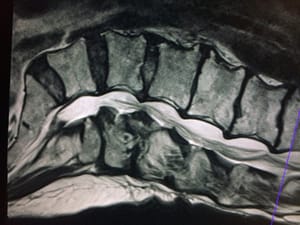Spinal Stenosis Treatment
Many spinal stenosis conditions can be treated through conservative methods, but some may require surgery to effectively relieve pain and restore function to the joint. Your doctor will decide which type of treatment is best for you after a thorough evaluation of your condition. Contact Us TodaySpinal Stenosis Diagnosis & Treatment In Wayne, New Jersey
Spinal stenosis is a serious condition that occurs when your spinal cord becomes pinched or compressed. High Mountain Orthopedics can help. Based in Wayne, New Jersey, we serve the region around each city with advanced treatments for spinal stenosis and other conditions. Get in touch today to learn how you can find relief.
What Is Spinal Stenosis?
The spinal cord is a bundle of nerves carrying information that the body needs to correctly function. It runs through a narrow canal in the vertebrae, which supports and protects the spinal cord. When the canal becomes too narrow, however, the tight space may put pressure on the spinal cord or roots of nerves that branch off of it. This results in a range of unpleasant symptoms, including:
- Erratic, inconsistent bouts of back pain
- Pain that worsens while walking, biking, or standing
- Relief when sitting, lying down, or bending forward
- Numbness or tingling in a hand, foot, arm, or leg
- Problems with walking or balance
If you are experiencing one or more of these symptoms, consult with our specialists for an evaluation. A prompt diagnosis is the key to effective treatment, relief of pain, and a higher quality of life.
Major Causes of Spinal Stenosis
Some individuals are born with a naturally narrow spinal canal. In many cases, though, spinal stenosis isn’t congenital. Instead, it often develops as a result of some other condition or phenomenon. Common causes include:
- Bone spurs: Time, arthritis, and injuries wear down cartilage over time, allowing vertebrae to rub against one another. This can cause bone spurs, which often pinch nerves in the spine.
- Disc bulges and herniations: Dried, flattened, or torn spinal discs are prone to bursting or bulging. The resulting shift can press on nerves near the disc.
- Spinal fractures: A sudden injury to a bone may cause it to press against the spinal cord. As it heals, scar tissue or new bone growth may do the same.
- Cysts and tumors: Abnormal growths on the spine may narrow the space through which the spinal cord passes, especially if they grow inward.
Because many of these causes are related to wear, most cases of spinal stenosis occur in patients over the age of 50. Spinal stenosis can still develop in younger individuals, however, especially as a result of an injury, tumor, or degenerative disease.
Our Treatments for Spinal Stenosis
Treatment for stenosis depends on its location and severity. Mild cases may be effectively managed with medication and physical therapy. Meanwhile, the doctor will monitor your progress and make sure the condition does not linger or worsen. If the pain grows more intense, a steroid injection can reduce inflammation and relieve some of the discomfort.
More severe cases, however, often require more directed treatment. A decompression procedure can non-invasively repair sections of thickened ligaments from the back of the spinal column, increasing the space available to nerves. There are also several types of surgery that may help, from minimally invasive options to more aggressive procedures. If surgery may be necessary, our specialists will discuss your options to ensure you have the information you need for an informed decision.
Find Relief for Your Spinal Stenosis
If you or a loved one is struggling with spinal stenosis, get help today in Wayne, NJ. At High Mountain Orthopedics, we can treat spinal stenosis with a range of effective modalities. Contact us to learn more or to schedule an in-person or telemedicine appointment.

Spine, Neck & Back Treatment Specialties
Schedule An Appointment Today!
If you or someone you know is in pain, we can help. Take the first step and schedule an appointment.
